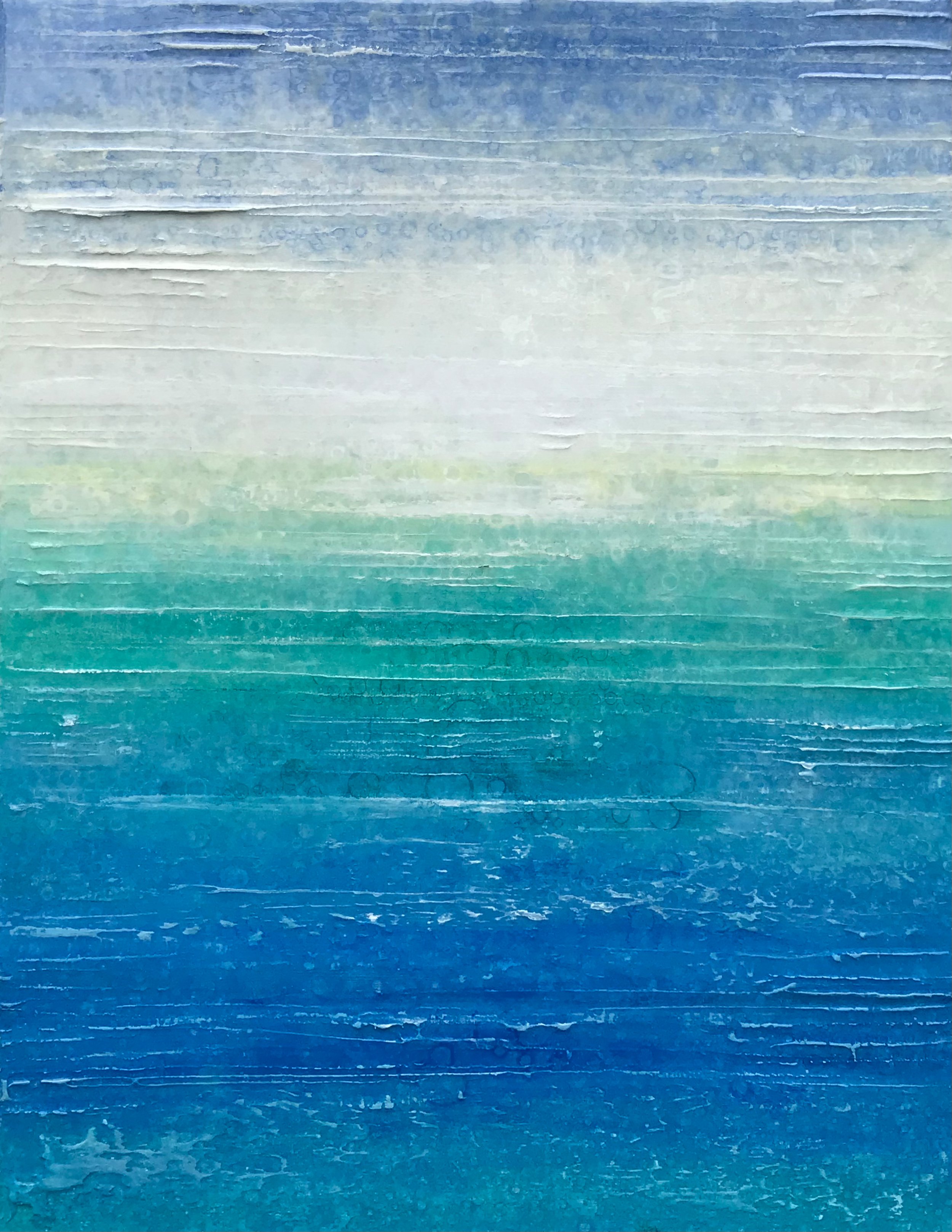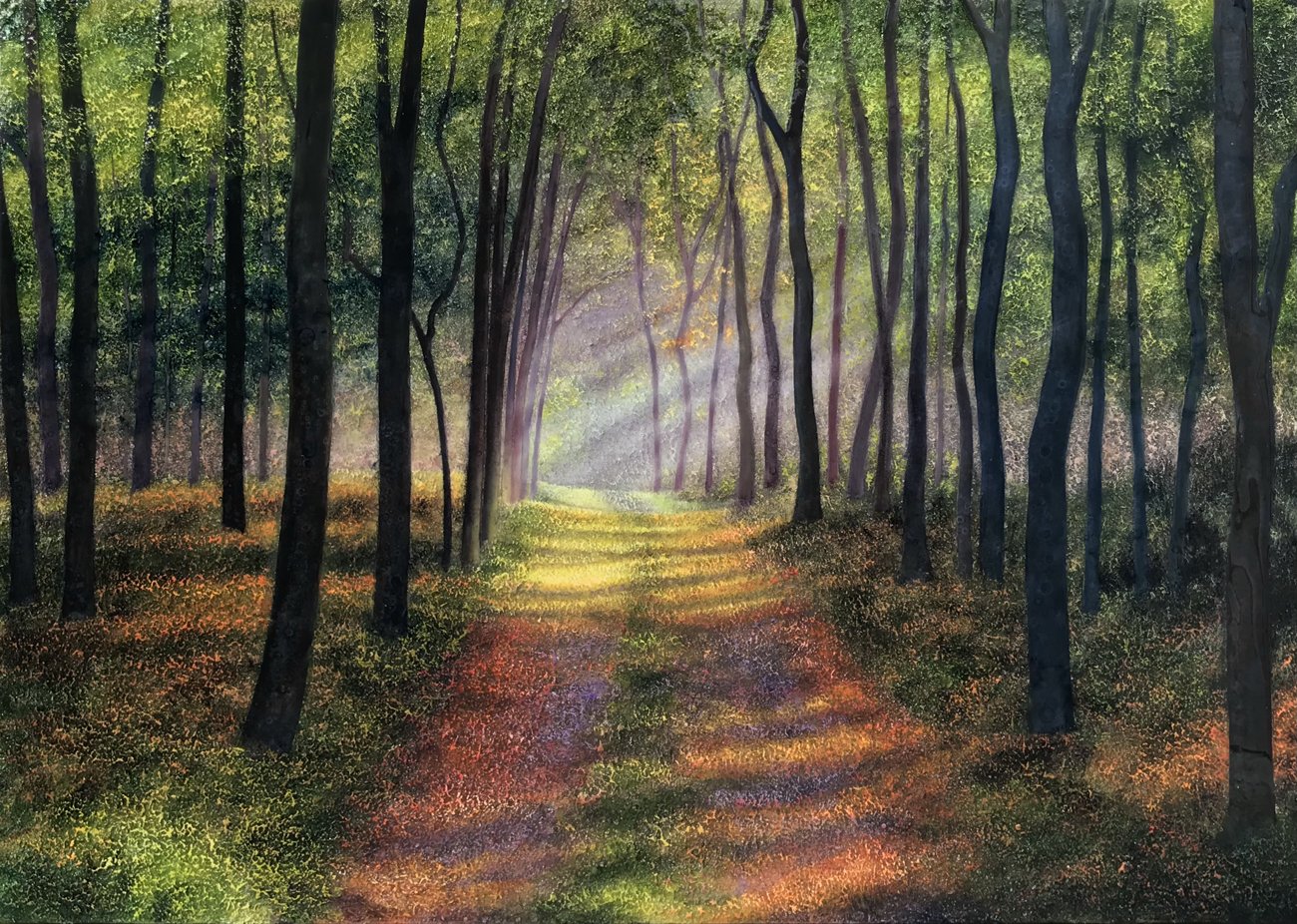“La Mer”
It has honestly surprised me how many people have asked me over the years if I’ve gone to art school or if I’m self taught. That question kind of makes me laugh because even artists that go to art school are self taught. If they’re any artist at all, they will spend the rest of their lives teaching themselves as they try new techniques and tackle new challenges. Just this last week, I ripped the canvases off of two good size pieces of mine and started all over. I know some folks will think that’s sad but it’s not at all sad: it’s growth. It may have been an experiment gone wrong, nevertheless you can’t help but learn from any experiment you work on, so although it was a frustrating thing to have to do (and humbling!), it was nevertheless successful. The pieces I’m working on as “round 2” are turning out SO much better than the previous “round 1”. That is a good thing.
But I digress. I would suggest that if someone were considering art as a career, I would absolutely suggest they ask an established artist whether or not they went to art school, and if so, which one and did they feel the experience prepared them for their future career as an artist.
I have strong feelings about art schools, because they can be really great or really a complete waste of money and time. A visit to the school and their student gallery will usually tell you all you need to know. If all the artwork is off the scale bizarre that will tell you something. If an artist wants to sell their work to the general public, then they need to consider what the general public would purchase. For instance, I once saw an “art piece” in a museum that was a clothes drier with lint balls coming out of it. That was it. I heard a guy behind me whisper to his wife, “that’s art??”. Really good question. I think sometimes that if art can sell, it ends up in a gallery. If it can’t sell, it ends up in a museum. I know that’s a horrible exaggeration but that’s how it feels sometimes.
My point in bringing that up is that if an art school doesn’t train the students in the “rules of art” (yes, there are rules), and if they’re just encouraged to express themselves with no guidance, the students will not be equipped to actually produce sellable art. They basically enrolled in an art therapy program, but I would recommend a would be professional artist hunts out a good school that will teach them technique and hammer the rules into them. Rules can be broken, but you have to be really skilled at how and when to break them. That requires learning.














